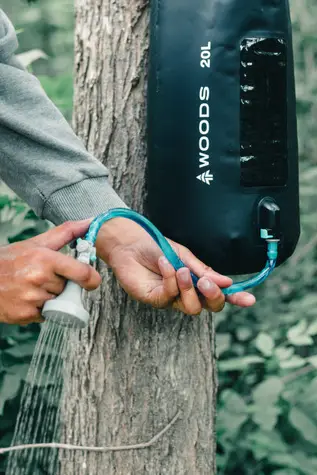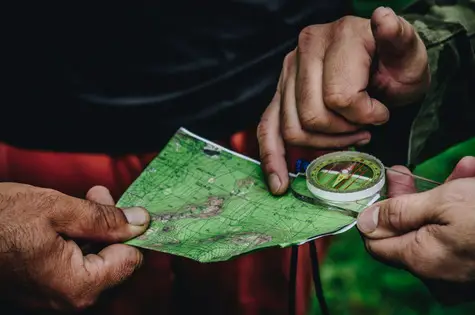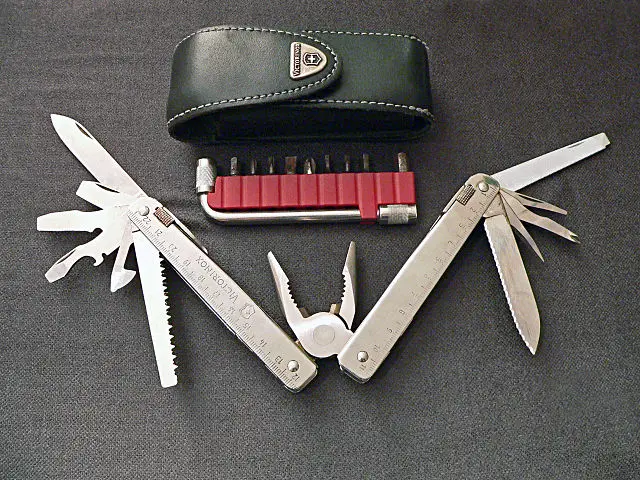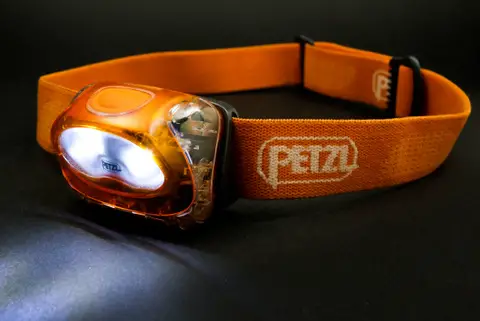12 Not-So-Obvious Camping Essentials
Everyone knows the basics of what to pack for a camping trip such as a tent, sleeping bag, and camping chairs, but many fail to consider some of the other essential items you may want to add to your gear list.
Here’s a handy list of items you may want to pack for your next date with wilderness which will help ensure your health, safety, and comfort.


Sunscreen
Many of us are used to working indoors all day and it’s therefore easy to forget just how quickly you can get sunburnt, especially during the summer months or when doing a bit of beachside camping.
Whether you’re planning day hikes through national parks, a bit of surfing along the coast, or simply sitting around an unshaded campsite, be sure to slap on the sunscreen and wear a hat to protect your precious skin while camping and enjoying the great outdoors.
We recommend SPF 50 to be safe and this will work for most environments. Remember to reapply after swimming unless you have a fancy waterproof brand and maybe pack a bit of aloe vera gel you can apply to any areas of skin that do get sunburnt.
Insect Repellent
Most camping trips sadly equate to mingling with insects. From flies and mosquitoes to ticks and spiders, it pays to be prepared when it comes to deterring pesky bugs that can otherwise ruin a camping trip.
Bug sprays that contain DEET are often effective, so look for products that contain this ingredient. Bug bites can be more than an inconvenience, they can also be a health hazard, so it’s best to avoid them altogether by using bug spray. Depending on where you are camping, some of the insect-borne diseases you could be exposed to include Lyme disease, West Nile Virus, and Encephalitis.
Solar Shower
A solar shower is a great item to have when camping, especially if you’re camping with kids. Kids can get really dirty while playing outdoors, and a solar shower is a great way to clean them up without having to use public camp showers, if they are even available at all.
Just fill-up the solar shower with water and let the sun heat it up. The shower typically has a temperature gauge on it, so you can tell when it’s hot enough. Trust us, if you decide to go camping for a few days without a shower, you will not want to stand near your fellow campers. Even after a single day of hiking, you are also likely to notice you aren’t smelling your finest.
Duct Tape
Duct tape is an essential item for any camper. It can be used to fix just about anythingfrom a tent stake that has broken, to a sleeping bag with a hole in it. Duct tape is also great for repairing broken gear such as a hiking boot that has come apart. It’s a good idea to keep a roll of duct tape in your camping gear bag or hiking daypack just in case you need it.
Water Sterilization Kit
If you’re camping in a remote area or there is no potable water available at the campground, you will need to bring your own water. While bringing bottled water will often get you through short camping trips, you may need to organize a way of sterilizing water from natural sources if you will be camping remotely for an extended period or will be needing large amounts of water.
You can of course simply sterilize water by boiling it, or you can use a specialized water filter/purifier. If you’re going to be camping in an area where there is even a slight risk of getting sick from drinking the water, it’s a good idea to bring along a water sterilization system.
There are special compact filtration straws that you can use to drink water directly from a stream or lake, and there are also larger water filters that can be used to purify large quantities of water if traveling with the family.
Resealable Bags
Resealable bags can be useful in many situations while camping. They are of course a great way to pack your food when camping to keep your food fresh, but they can also prevent bugs and small animals from getting into your food supply.
Resealable bags are also a great way to keep items dry. Moisture and electronics of course don’t mix well, so placing smartphones, GPS units, and other electronics in plastic bags will help ensure they don’t get ruined from rain or humidity. Bags will also help keep sand away from your electronics during those beach camping trips.
There are a variety of sizes and shapes of resealable bags available, and it’s always a good idea to pack a nice variety of sizes that can be used for a wide range of items.
Paper Maps
We may now live in a digital world where maps can easily be found and downloaded online, but that doesn’t mean that good old paper maps are quite obsolete just yet. Cell phone service can be spotty in remote areas, batteries can die with no way of recharging, and GPS devices can fail.
Having paper maps as a backup plan will ensure you find your campsite and be able to return to it safely after enjoying nearby hikes. We also encourage you to print out park maps that give detailed information regarding the hiking trails you plan to explore, preferably ones which offer topography and distances between waypoints or trail markers.
Firearm
While this camping item may not be for everyone, it may be a good idea to bring if you’re camping in an area where there is a risk of encountering dangerous wildlife or when planning to camp at a site where crime may be a greater risk.
The US approved a law in 2010 which allows loaded firearms to be brought within national parks, which means people can now carry legal handguns into parks and campsites such as a Glock 17 or Glock 19,which are some of the most popular guns in the USA.
Glock 17 and 19 handguns are inexpensive, easy to use, and reliable pistols that could potentially help protect you and your family. Just make sure your possession of the firearm complies with the laws of the state where the park area is located and that you don’t bring them into park visitor centers where they remain prohibited. Campers must obey all the federal, state, and local gun laws associated with the national parks they are camping in.
Bear Spray
If you’re camping in an area where there is a risk of encountering bears, you will want to pack a canister of bear spray. Bear spray is one of the most effective deterrents and lines of defense when it comes to charging bears.
The key is purchasing an EPA-approved bear spray and making sure it adheres to the national park or area you will be camping in. While bear spray is rather easy to use, learn exactly how and when to use it and keep it on a hip belt or otherwise easily accessible in case you need to use it. Keeping it tucked away in your hiking pack may mean you won’t be able to get to it quickly enough.
Multi-Tool
A multi-tool is a must-have for any camper. It can be used for everything from repairing gear to opening a can of food. There are a variety of different multi-tools available, so you can choose one that suits your needs. You’d be surprised at just how many times you will find yourself saying you wished you had a tool for a certain task while camping.
Whether you’ll be hiking, biking, or fishing while camping, multi-tools will allow you to tackle just about any job. Many come with tools like screwdrivers, mini saws, scissors, pliers, knives, and more.
Photo by EvaK [CC BY-SA 2.5 ) wikimedia commons
Banner Image: Photo by Jim Pennucci
Headlamp
Camping in the wilderness means simply utilizing the light from the moon once the sun goes down unless of course you pack light sources of your own. While portable lanterns and flashlights can be useful, headlamps are perfect for camping because they free up your hands.
Headlamps especially come in handy while cooking, pitching a tent after dark, fixing gear in the dark, reading a book at night, or during nighttime visits to the bathroom. There are a variety of different headlamps available, so you can choose one that is right for you.
Bivy Sack
While you may have packed a sleeping bag and tent for sleeping, you may want to consider also bringing along a small lightweight bivy sack. Used as an alternative to a tent, they are a weatherproof way to enjoy a night’s sleep if you’re planning on doing long day hikes and find yourself having misjudged times or distances and can’t make it back to your campsite in time.
Ideally, you will never have to use your bivy sack and can relax in the comfort of your fancy tent, but it can be a great insurance policy if you don’t make it back to camp. Bivy sacks are meant for a single person, and designed to withstand rain and wind. They are also much lighter to carry than tents while hiking and require hardly any setup or breaking down.
These are just a few of the essential items that you may want to consider taking on your next camping adventure. Make sure to always bring along items that are specific to your needs, as each camping trip is different and may require different gear.




























